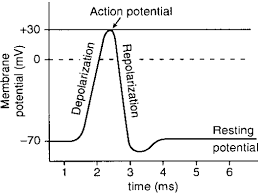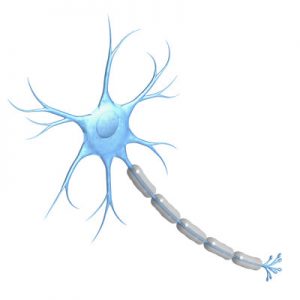Resting membrane potential is the charge difference across the membrane of a neuron when not firing an action potential or recovering during the refractory period. The membrane potential at rest is -70 mV.

(“Action potential graph” )
Matthew Cook, Kevin Draeger, Alexandra Fietsam, Rachel Reyes
Resting membrane potential is the charge difference across the membrane of a neuron when not firing an action potential or recovering during the refractory period. The membrane potential at rest is -70 mV.

(“Action potential graph” )
Membrane potential is developed when there is a difference in charge across a cell’s membrane. Negatively-charged organic ions like proteins are in higher concentrations in the cell, while positively-charged sodium is more concentrated outside of the cell. The resting membrane potential of the human neuron is -70 mV.

(“Membrane potential”, 2012)
Dendrites are smaller projections out from the soma of a neuron. These projections collect the signal transmitted to the neuron. This stimulation builds towards the threshold potential to initiate an action potential. Dendrites tend to taper off and be shorter than axons.

(“Neuron anatomy”, 2016)
The axon is the long projection out from the soma of the neuron. The action potential travels along this path to transmit the neural signal. The axon is covered in voltage-gated ion channels and sodium-potassium pumps. Action potentials will travel faster if the axon is myelinated.

(“Neuron anatomy”, 2016)
The neuron is a specialized cell that transfers electrochemical signals. It allows information to be passed from one cell to the next and can amplify signals for greater response. Neurons are key components of the nervous system. Major anatomical components of the neuron include the dendrites, the axon, and the myelin sheaths.
